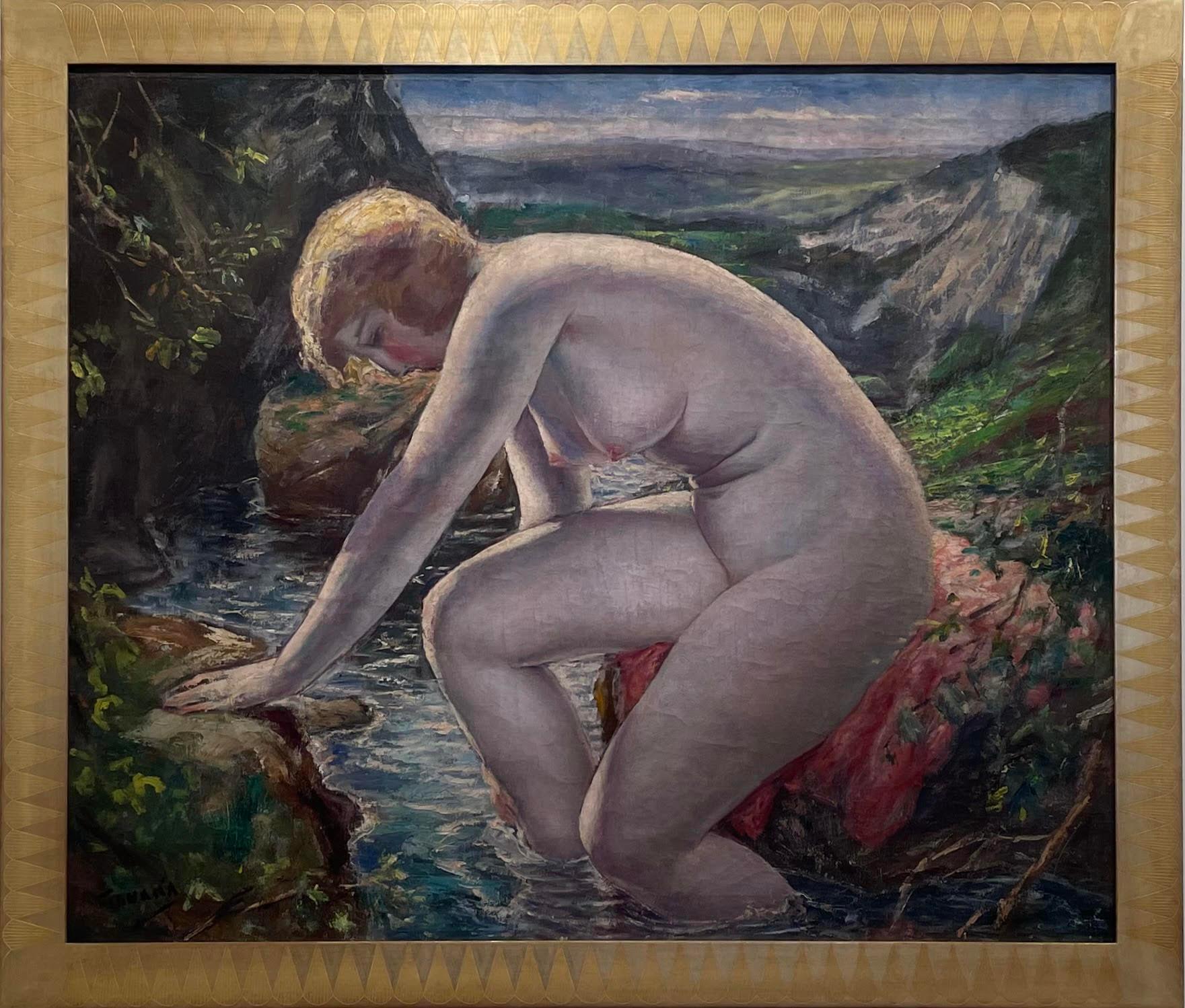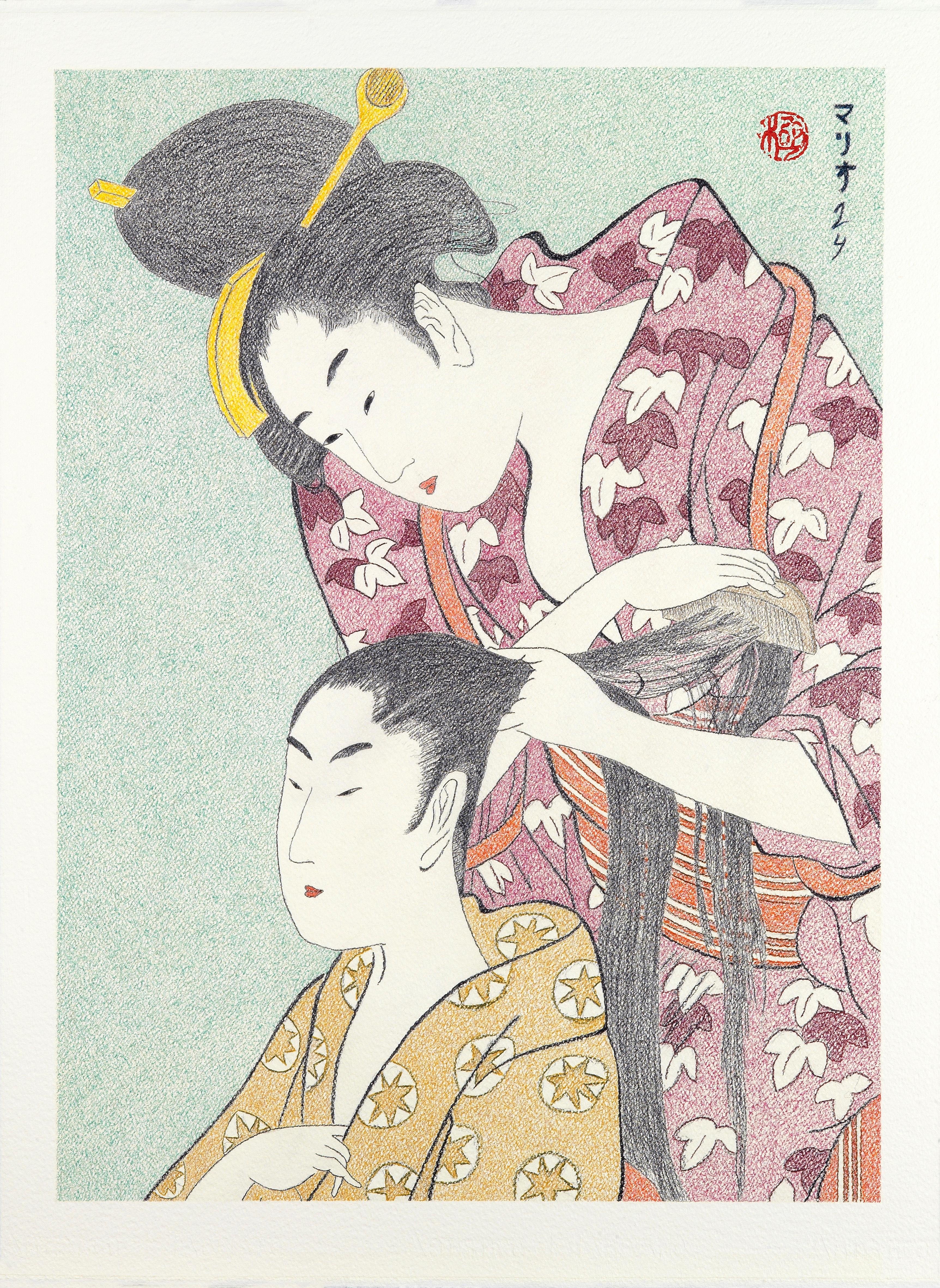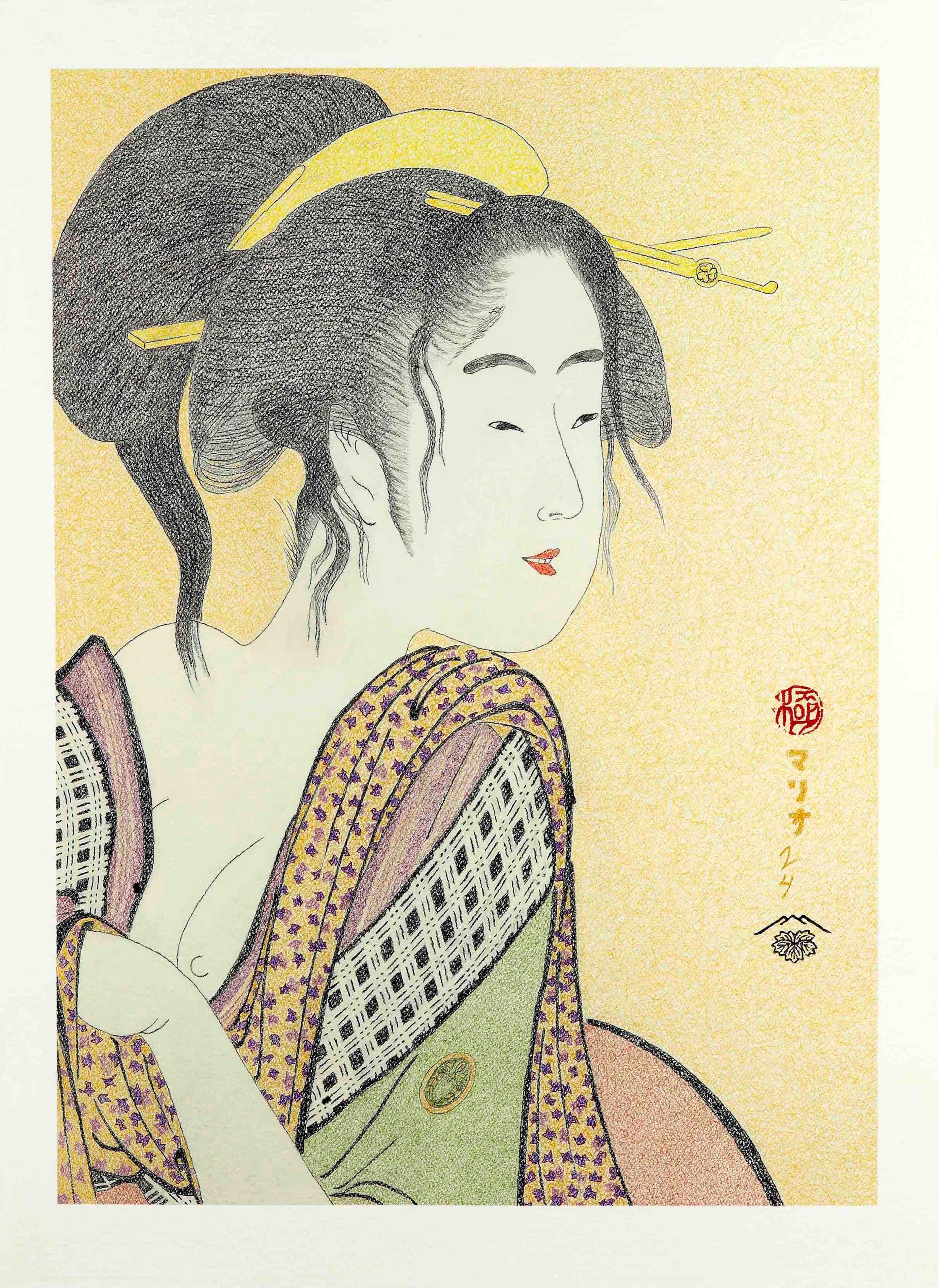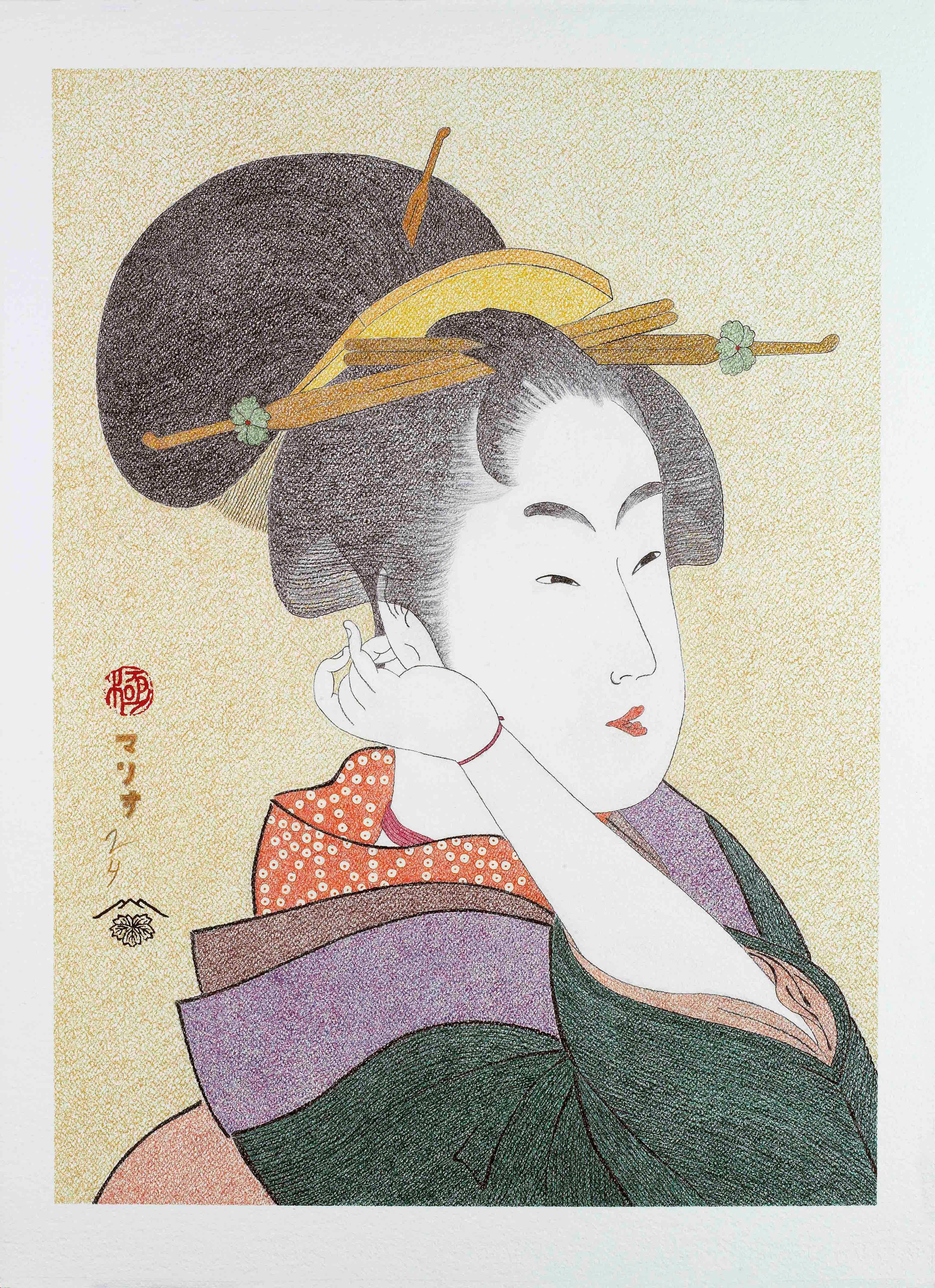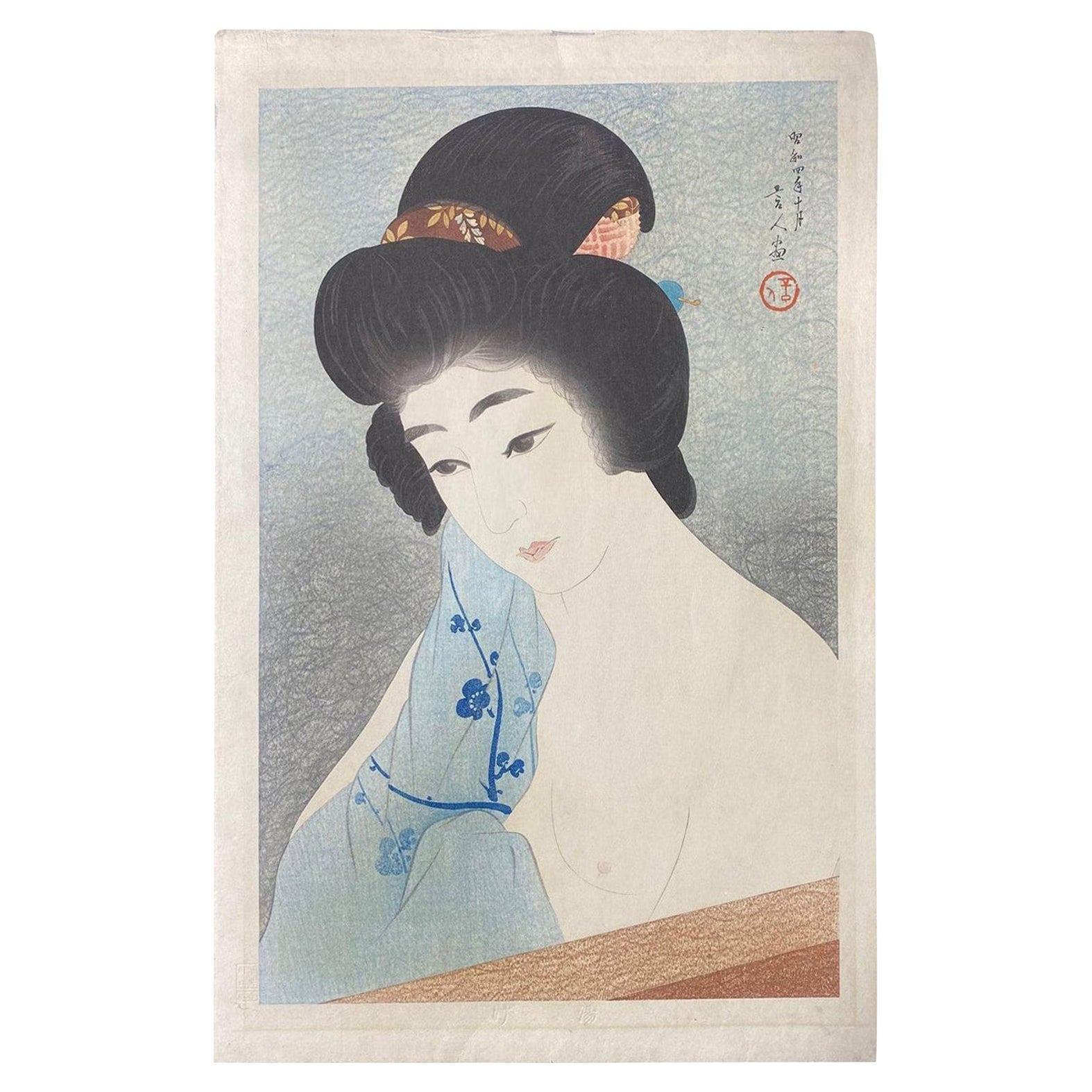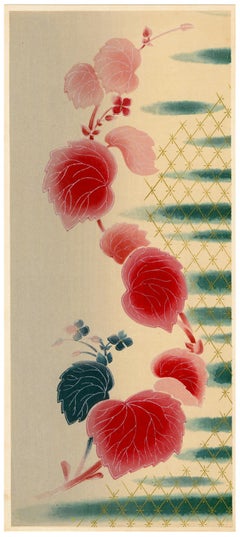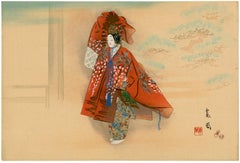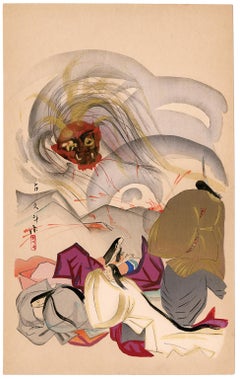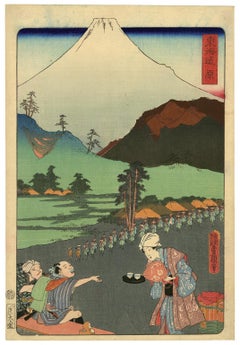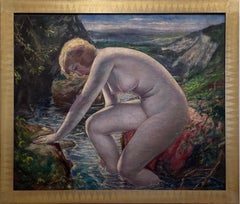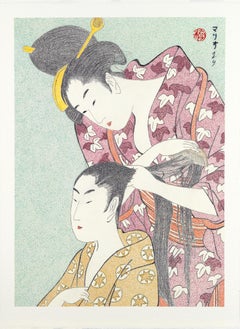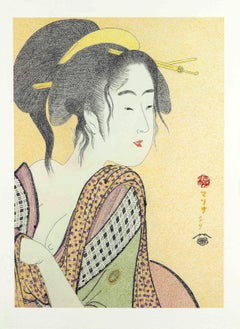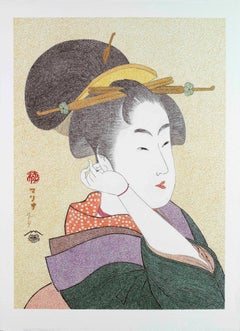Helen Hyde'El Baño' - Artista Mujer Transcultural de la Era Meji1905
1905
Acerca del artículo
- Creador:Helen Hyde (1868 - 1919, Americana)
- Año de creación:1905
- Dimensiones:Altura: 41,28 cm (16,25 in)Anchura: 25,72 cm (10,125 in)
- Medio:
- Movimiento y estilo:Showa
- Época:
- Estado:
- Ubicación de la galería:Myrtle Beach, SC
- Número de referencia:1stDibs: LU532315647472
Helen Hyde
Helen Hyde fue grabadora e ilustradora, nació en Lima, Nueva York, pero pasó una infancia culta en Oakland, California. A los 12 años empezó a estudiar arte con Ferdinand Richardt, pero dos años más tarde, cuando su padre murió y su familia se instaló en San Francisco, la enseñanza terminó abruptamente. Hyde y su madre se trasladaron a Filadelfia y, tras graduarse en la escuela Wellesley, regresó a San Francisco y estudió en la Escuela de Diseño. Hyde estudió brevemente en la Liga de Estudiantes de Arte de Nueva York entre 1888 y 1889. Al año siguiente emprendió una estancia de cuatro años en Europa, que incluyó estudios con Franz Skarbina en Berlín, Rafael Collins y Albert Sterner en París, y meses en Holanda e Inglaterra. En París, Hyde conoció a Félix Régamey, que la introdujo en la "belleza de las cosas japonesas", y este encuentro tendría un profundo efecto en su vida y en su obra. De vuelta a San Francisco, Hyde buscó sujetos en Chinatown y produjo su primera serie de grabados en color. En 1899, Hyde viajó a Japón, donde se convirtió en una ferviente estudiosa de la lengua japonesa y en alumna de pintura clásica a pincel de un artista austriaco que trabajaba en Tokio, y fue de él de quien aprendió la técnica de tallar planchas de madera. Acabó aceptando el sistema japonés de trabajo dividido y empleó a tallistas e impresores japoneses (Shohiro Murata talló sus xilografías durante once años). Japón fue el hogar de Hyde hasta 1914, cuando regresó a Estados Unidos debido a su mala salud. Hyde expuso tanto a escala nacional como internacional y su obra obtuvo distinciones en Japón. Obtuvo la medalla de oro en la Exposición Alaska-Yukón-Pacífico de Seattle en 1909 y la medalla de bronce por xilografía en la Exposición Internacional Panamá-Pacífico de 1915. Hyde fue miembro de la Sociedad de Grabadores de Chicago, de la Sociedad de Grabadores de California, de la Sociedad de Artistas de Chicago y miembro vitalicio de la Sociedad de Grabado en Couleur.
- EnvíoRecuperando presupuesto…Envío desde: Myrtle Beach, SC
- Política de devolución
Más de este vendedor
Ver todoPrincipios del 1900, Showa, Impresiones figurativas
Grabado en madera
Década de 1930, Showa, Impresiones figurativas
Grabado en madera
Década de 1920, Showa, Impresiones figurativas
Grabado en madera
Década de 1860, Edo, Impresiones figurativas
Grabado en madera
Década de 1940, moderno estadounidense, Impresiones figurativas
Acuatinta
Década de 1960, Moderno, Impresiones de naturaleza muerta
Grabado en madera
También te puede gustar
Década de 1920, Moderno, Pinturas figurativas
Lienzo, Óleo
2.º década del siglo XXI, Edo, Dibujos y acuarelas figurativos
Crayón, Papel, Crayón al óleo, Grafito
2.º década del siglo XXI, Edo, Dibujos y acuarelas figurativos
Papel, Crayón, Crayón al óleo, Grafito
2.º década del siglo XXI, Edo, Dibujos y acuarelas figurativos
Papel, Crayón, Crayón al óleo, Grafito
Vintage, Década de 1920, Japonés, Showa, Impresiones
Papel
Década de 1890, Moderno, Impresiones figurativas
Grabado en madera
